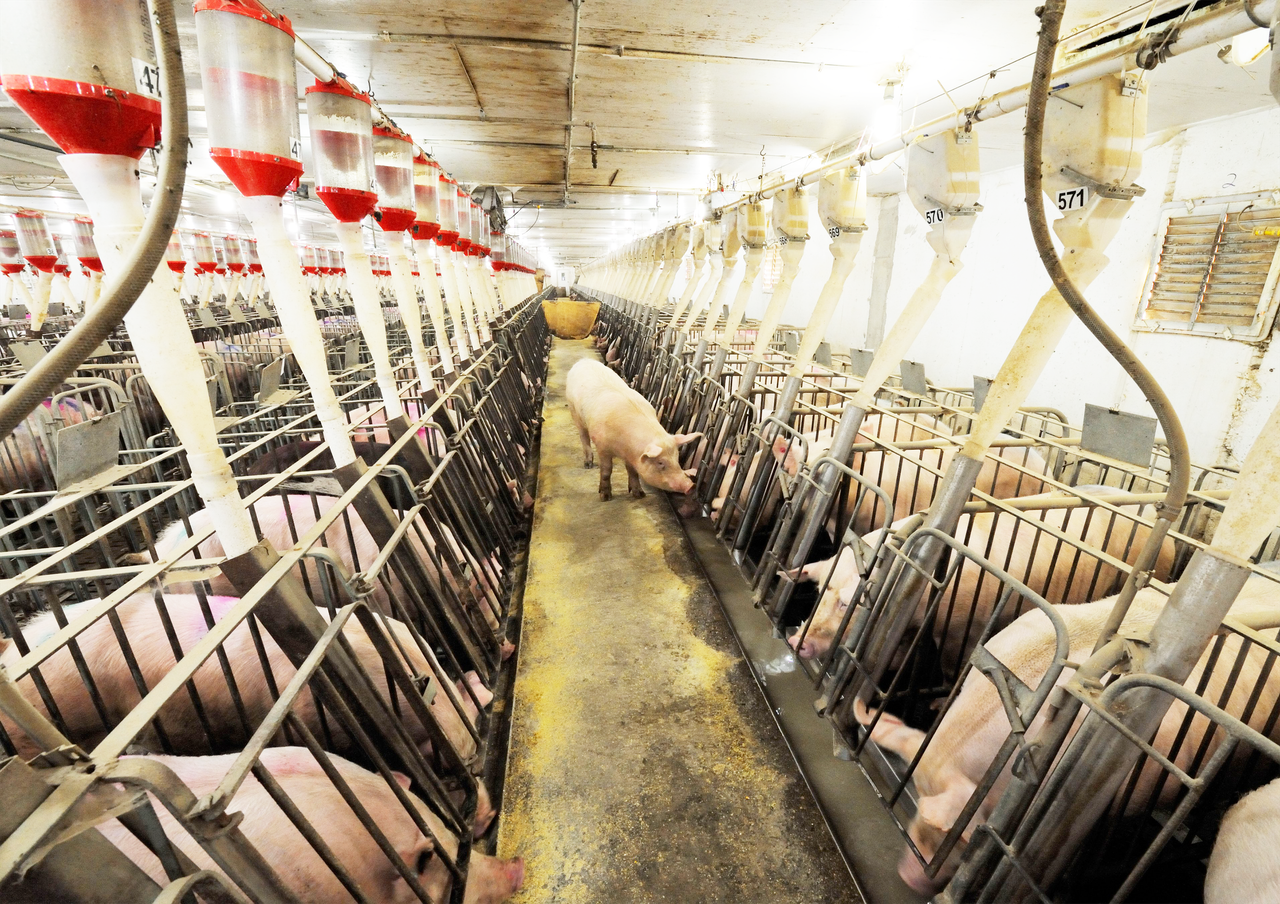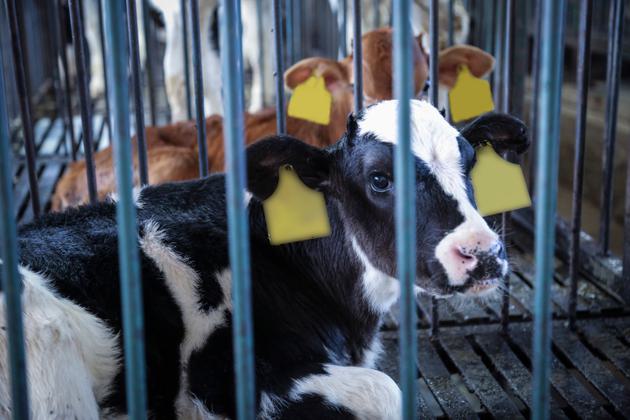
The world’s hunger for meat is accelerating the rise of superbugs
The use of antibiotics has revolutionised livestock farming, curbing the spread of diseases among animals kept in cramped conditions. But it comes at a potentially deadly cost to human health. Widespread antibiotic use in animals can cause the evolution of drug-resistant superbugs fatal to humans.
Now experts warn that the model of intensive agriculture used in the world’s richer countries, which relies on routine drug usage, is increasingly being adopted by countries with much weaker healthcare and sanitary systems.
The Bureau has identified a spike in the use of a class of antibiotics deemed critical to human health in US farming in recent years, but an even graver long-term threat comes from escalating use of antibiotics in the developing world.
It is estimated that the adoption of intensive farming practices in middle-income countries will account for up to a third of the increase in global use of antibiotics for livestock between 2010 and 2030. Antibiotic use on farm animals is expected to double in Brazil, Russia, India, China and South Africa over this period.
“We’ve exported this industrial food-animal production model to the world,” said Lance Price, a professor at the George Washington University’s Milken Institute School of Public Health and founding director of the Antibiotic Resistance Action Center.
Overall sales of antibiotics for use on livestock are falling in the US, having dropped by 14% between 2010 and 2019. Yet sales of aminoglycosides, a class of antibiotics that includes gentamicin – a medicine widely used to treat humans – have spiked, rising 45% during the same period. The use of these drugs grew particularly sharply in pig rearing, according to data published by the government’s Food and Drug Administration.
The Bureau revealed in June that the use of this class of drugs had more than doubled on UK pig farms between 2015 and 2019.
Stewart Leeth, the chief sustainability officer of Smithfield Foods, said: “Our use of this class of antibiotics is as prescribed and overseen by veterinarians – and is as approved by the US FDA.”
JBS, Cargill, Burger King and Walmart did not immediately respond to requests for comment.
An FDA official said “sales data do not necessarily reflect actual use of antimicrobial drugs”.
An urgent threat
Since becoming widely available in the 1940s, antibiotics have reduced the danger of previously life-threatening infections and made once-risky operations such as caesarean sections a matter of routine.
The drugs have also made industrial farming possible. As well as curbing disease, they stimulate growth in animals – a chance discovery in the 1940s since exploited by meat producers worldwide – and antibiotic use has become standard practice in the sector over the last 70 years.
 The quantity of antibiotics given to farm animals dwarfs that used in human healthcare
Animal Equality
The quantity of antibiotics given to farm animals dwarfs that used in human healthcare
Animal Equality
But the widespread use of antibiotics – on humans as well as animals – comes with a potentially drastic cost. Bacteria evolve to develop resistance to the drugs attacking them; the more antibiotics are used, the more resistance to them rises. If humans then become infected with these bacteria, the drugs will be useless. In 2018, an estimated half a million people fell ill with a form of tuberculosis that became resistant to what was one of the most effective treatments.
The same dynamic applies to other antimicrobial drugs – medicines used to kill microbes including bacteria, fungi and parasites: what doesn’t kill them makes them stronger.
Today, the quantity of antimicrobials given to animals vastly outstrips the amount used in human healthcare. Scientists estimate that nearly three-quarters of the antimicrobials used globally are pumped into livestock.
In general, the global increase in antibiotic use among both humans and animals is being driven by low- and middle-income countries. Long-term trends show that antibiotic use is falling in most rich countries as regulations tighten – but in many low and middle-income countries, it is soaring.
In these countries, people’s need for antibiotics is higher because of the burden of disease created by poor sanitation and lower vaccination coverage for routine illnesses.
As such countries develop, their food consumption is changing to include far more animal protein. This surging demand for meat encourages the adoption of industrial farming practices – “including rampant antibiotic use”, said Price.
In many low- and middle-income countries, there is no infrastructure to provide clean water, which allows the drug-resistant bacteria that evolve through antibiotic use on farms to spread easily from animals to people.
“This circular exchange between animals and humans, where you have rampant antibiotic use in both places, leads to the evolution and dissemination of these really resistant bacteria,” said Price, adding that the problem is growing.
Antibiotic resistance is already one of the gravest threats to public health, causing around 700,000 deaths a year worldwide.
‘A political void’
Antimicrobial resistance has surged during the Covid-19 pandemic, said Professor Marc Mendelson, the chair of the South African ministerial advisory committee on antimicrobial resistance and founding chair of the South African antibiotic stewardship programme.
Monitoring for drug-resistant infections has been hampered by the diversion of resources to fighting Covid, while the misuse and overuse of antibiotics ramped up, experts say – especially towards the beginning of the pandemic when scientists and doctors were struggling to get a grip on the virus. “Antibiotic stewardship went out the window,” said Price.
Some studies have found that while as few as 7% of Covid patients have had bacterial co-infections (which require antibiotics), as many as 70% have been given antibiotic drugs.
Covid-19 has also diverted political attention away from antimicrobial resistance, say experts. Progress was being made before the pandemic, albeit patchily, with a series of recent regulations starting to bear fruit.
In 2016, China banned the use in animal feed of colistin, which is a last-resort antibiotic in human medicine. Three years later, the Indian government followed suit after a Bureau report showed that the supply chains of the country’s largest meat producers, including some that sold to global fast-food outlets, were using colistin to fatten chickens.
In much of the world, however, antibiotics are still used on livestock as growth promoters. Even in the US, where this was banned by the FDA in 2017, preventative antibiotic use on livestock is still sanctioned – which means that, in practice, the new regulations have brought little change, according to Matthew Wellington, the director of public health campaigns at the US Public Interest Research Group.
Arm yourself with the facts: information is power.
Follow our investigationsThe EU offers a particular bright spot. Antibiotic use for growth promotion has been banned in its member states since 2006, and legislation banning preventative use of all antibiotics unless prescribed by a vet will come into force next year.
These rules will not affect the UK, whose government has previously said it plans to implement some restrictions in line with the EU proposals but has yet to commit to any.
In the wake of Brexit, the UK has agreed a trade deal with Australia and is eyeing agreements with New Zealand and the US – all of which permit forms of antibiotic use in agriculture that would not be legal in the UK, campaigners say. These deals mean that any talk of antibiotic restrictions smacks of “hypocrisy”, according to Suzi Shingler, the campaign manager for the Alliance to Save our Antibiotics, an EU-wide coalition.
A recent study by the organisation estimated that US farm animals are dosed with five times as many antibiotics as those in the UK. (The US meat industry says all drugs are FDA-approved and insists they are being used appropriately.)
With the US attempting to reduce unnecessary antibiotic use, the focus must now fall on low- and middle-income countries, said Price. “It [antibiotic overuse] is a global problem ... There is no ‘over there’ when it comes to microbes.”
The drive to tackle antibiotic resistance will first need to recover the momentum lost due to Covid-19. Mendelson said the world’s leaders need to once again take the issue seriously: “There’s a political void.”
Reporters: Susannah Savage and Andrew Wasley
Environment editor: Jeevan Vasagar
Investigations editor: Meirion Jones
Production editors: Alex Hess and Emily Goddard
Impact producer: Grace Murray
Fact checker: Alice Milliken
Legal team: Stephen Shotnes (Simons Muirhead Burton)
Our reporting on antimicrobial resistance is part of our Eating the Earth project, which has several funders. Our work on superbugs (to December 2018) was funded by the European Journalism Centre. None of our funders has any influence over the Bureau’s editorial decisions or output.
Header image: An automatic feeding system at a hog breeding farm. Credit: Greg Taylor/ Alamy
-
Area:
-
Subject:


